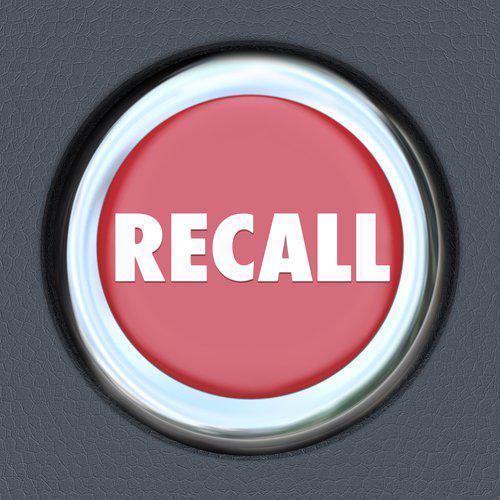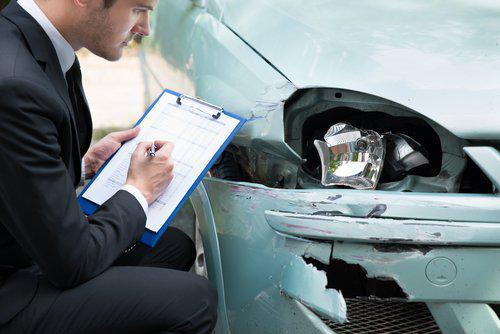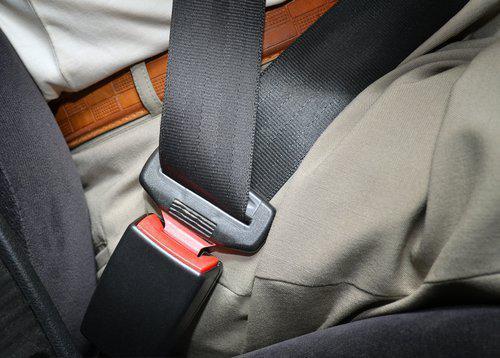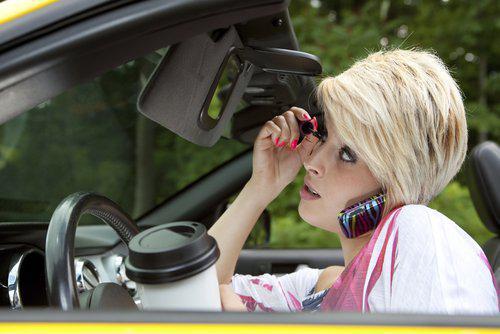Recent Blog Posts
Taxi Cab Accidents in Wisconsin
 The law surrounding any car accident can be complex, but taxi cab accidents can have their own unique legal issues. As a passenger, there are special rules related to the fact that taxi cabs are “common carriers,” which means that they have a higher obligation to keep their passengers safe than ordinary drivers do. As a bystander, such as a driver in another car, there are also unique rules pertaining to cabs because they are commercial, regulated vehicles, rather than just normal cars being driven by private people.
The law surrounding any car accident can be complex, but taxi cab accidents can have their own unique legal issues. As a passenger, there are special rules related to the fact that taxi cabs are “common carriers,” which means that they have a higher obligation to keep their passengers safe than ordinary drivers do. As a bystander, such as a driver in another car, there are also unique rules pertaining to cabs because they are commercial, regulated vehicles, rather than just normal cars being driven by private people.
As a Passenger
Taxi cabs owe their passengers special duties because of their common carrier status. The leading legal dictionary defines common carriers as “a commercial enterprise that holds itself out to the public as offering to transport freight or passengers for a fee.” These sorts of enterprises typically include taxi cabs, buses, and railroads among others. Taxi cabs' common carrier status is important because it means that they have an increased duty to protect their passengers from harm.
When Car Crashes Occur Because of Vehicle Defect
 When looking to assign fault in a traffic accident, most people focus on the two drivers involved. Yet, they are not the only people with control over the situation. There are times when the crash happened because of a mistake made by the car's manufacturer or designer - resulting in a vehicle defect - rather than by either of the drivers who were in the crash. From this standpoint, there are three major mistakes by a car company that can cause an accident: manufacturing defects, design defects, and failure to warn or properly instruct consumers about the danger.
When looking to assign fault in a traffic accident, most people focus on the two drivers involved. Yet, they are not the only people with control over the situation. There are times when the crash happened because of a mistake made by the car's manufacturer or designer - resulting in a vehicle defect - rather than by either of the drivers who were in the crash. From this standpoint, there are three major mistakes by a car company that can cause an accident: manufacturing defects, design defects, and failure to warn or properly instruct consumers about the danger.
Manufacturing Defects
One possible way that a car company could be at fault for a crash is if there was a manufacturing defect. A manufacturing defect occurs when the car is properly designed and should be safe, but there is an error in how it is put together. For instance, if a car is assembled at the factory in such a way that the brake pads are likely to fall off, that would be a manufacturing defect. In order to recover for a manufacturing defect, a victim must show five things:
Traffic Accidents and Verbal Statements: What You Should Not Say
 One of the most difficult things for people to deal with in relation to traffic accidents and verbal statements is the fact what they say early in the process can have powerful impacts later on. People involved in traffic accidents will end up dealing with complex bureaucracies like the police department and insurance companies. People should understand that things they say at the scene of the accident or when talking to insurance companies can be used as evidence against them later in the case. In fact, people can even accidentally settle their claims without meaning to when talking to insurance companies because the law and legal ethics give clients a wide degree of authority to settle their own cases.
One of the most difficult things for people to deal with in relation to traffic accidents and verbal statements is the fact what they say early in the process can have powerful impacts later on. People involved in traffic accidents will end up dealing with complex bureaucracies like the police department and insurance companies. People should understand that things they say at the scene of the accident or when talking to insurance companies can be used as evidence against them later in the case. In fact, people can even accidentally settle their claims without meaning to when talking to insurance companies because the law and legal ethics give clients a wide degree of authority to settle their own cases.
Responsibility for Self-Driving Car Crashes
 Although self-driving cars sound like the stuff of science fiction, they may be closer to becoming a reality than people think. Google has been testing and improving its fleet of autonomous cars for years, and the CEO of Nissan recently predicted that automated cars could be available to consumers by 2020. The rapid development of these vehicles means that they are still operating in something of a legal grey area, and open questions about a variety of issues. One of the most commonly asked of these questions is who bears responsibility in the event of a self-driving car crash.
Although self-driving cars sound like the stuff of science fiction, they may be closer to becoming a reality than people think. Google has been testing and improving its fleet of autonomous cars for years, and the CEO of Nissan recently predicted that automated cars could be available to consumers by 2020. The rapid development of these vehicles means that they are still operating in something of a legal grey area, and open questions about a variety of issues. One of the most commonly asked of these questions is who bears responsibility in the event of a self-driving car crash.
The Problem
The problem with assigning liability in self-driving car crashes is that there are two potential options, and they both come with their own issues. First, the law could simply hold the owner liable in cases where their self-driving car crashes. However, this does not seem satisfying. After all, the person who owns the car has no control over what it does. It would be similar to a car's owner today loaning their car to someone else and had to bear the responsibility for any accidents that the person may cause.
Common Car Accident Injuries
 Wisconsin drivers put themselves at risk every time they get behind the wheel. In fact, according to statistics compiled by the Wisconsin Department of Transportation, there are over 100,000 traffic accidents every year on Wisconsin roads, and around 30,000 of those accidents result in injuries. It is important for drivers to understand the types of car accident injuries that can occur because there are some that reoccur commonly. These types of injuries can be broken down into three categories: general blunt trauma injuries, neck and back injuries, and traumatic brain injuries.
Wisconsin drivers put themselves at risk every time they get behind the wheel. In fact, according to statistics compiled by the Wisconsin Department of Transportation, there are over 100,000 traffic accidents every year on Wisconsin roads, and around 30,000 of those accidents result in injuries. It is important for drivers to understand the types of car accident injuries that can occur because there are some that reoccur commonly. These types of injuries can be broken down into three categories: general blunt trauma injuries, neck and back injuries, and traumatic brain injuries.
Blunt Trauma
Some of the most common types of car accident injuries are the ones that a person would expect based on the fact that car accidents involve impact trauma. Things like broken bones, sprains, strains, and severe contusions are all possibilities. While these types of injuries may not be as serious as other injuries that arise from traffic accidents they can still be painful, expensive, and take months to heal.
The Seat Belt Defense: Another Good Reason to Wear a Seat Belt
 There are many good reasons to wear seat belts. For instance, they limit people's injuries in car accidents, and the law requires people to wear them. Yet, most people do not think about another benefit that comes from wearing seat belts: protection from the “seat belt defense” if the person is involved in a traffic accident. The seat belt defense is a controversial defense raised by the person who caused the accident, and it argues that the victim's damages should be reduced because they were not wearing their seat belt at the time of the crash. While only 15 states recognize this defense, Wisconsin is one of them, so drivers should be aware of how the defense operates.
There are many good reasons to wear seat belts. For instance, they limit people's injuries in car accidents, and the law requires people to wear them. Yet, most people do not think about another benefit that comes from wearing seat belts: protection from the “seat belt defense” if the person is involved in a traffic accident. The seat belt defense is a controversial defense raised by the person who caused the accident, and it argues that the victim's damages should be reduced because they were not wearing their seat belt at the time of the crash. While only 15 states recognize this defense, Wisconsin is one of them, so drivers should be aware of how the defense operates.
The Seat Belt Defense
When one driver causes an accident with another, the driver who caused the accident is allowed to raise certain defenses that reduce the amount that the liable driver would otherwise pay to the victim to cover their injuries. One of these defenses is known as “failure to mitigate damages,” meaning that even though the liable driver was negligent, there were steps that the victim should have taken to reduce the harm that they suffered. If the jury is convinced that the victim had a duty to take those steps, the victim's damages can be reduced in proportion to the amount of harm that they could have prevented on their own.
Negligence and Traffic Laws in Wisconsin
 Many people's first experience with the legal system comes by way of a traffic accident. In fact, with over a hundred thousand accidents every year, according to statistics published by the Wisconsin Department of Transportation, everyone is likely to be in multiple traffic accidents over the course of their lives. Some people may wonder about what good traffic laws are if there are still so many accidents, but it turns out that, in addition to preventing accidents, traffic laws are also useful during traffic accident lawsuits. This is because an accident victim must show that the person who injured them was “negligent” in order to recover, and showing that someone violated traffic laws is a good way of showing negligence.
Many people's first experience with the legal system comes by way of a traffic accident. In fact, with over a hundred thousand accidents every year, according to statistics published by the Wisconsin Department of Transportation, everyone is likely to be in multiple traffic accidents over the course of their lives. Some people may wonder about what good traffic laws are if there are still so many accidents, but it turns out that, in addition to preventing accidents, traffic laws are also useful during traffic accident lawsuits. This is because an accident victim must show that the person who injured them was “negligent” in order to recover, and showing that someone violated traffic laws is a good way of showing negligence.
How Daylight Savings Time Affects Your Car Accident Risk
 Recently, the country, like many around the world, sprung forward into daylight savings time, and in doing so increased drivers' risk for suffering a serious car accident. The spring adjustment for daylight savings time subtracts an hour from everyone's sleep, and some research suggests that the change in sleep patterns makes people less attentive drivers. This, along with other potential health concerns, has led to suggestions to remove daylight savings from the calendar, since it no longer serves its original purpose. Yet, some other research suggests that it may actually have beneficial safety effects from a traffic perspective.
Recently, the country, like many around the world, sprung forward into daylight savings time, and in doing so increased drivers' risk for suffering a serious car accident. The spring adjustment for daylight savings time subtracts an hour from everyone's sleep, and some research suggests that the change in sleep patterns makes people less attentive drivers. This, along with other potential health concerns, has led to suggestions to remove daylight savings from the calendar, since it no longer serves its original purpose. Yet, some other research suggests that it may actually have beneficial safety effects from a traffic perspective.
Why Have Daylight Savings Time
In some sense, people observed daylight savings time for much of human history since strict scheduling and precise times were not kept. Instead, farmers would simply adjust their schedules based on sunrise and sunset. However, the advent of trains, which crossed the country and ran on precise schedules, led to a standardization of times across the world. This created problems because the standard times would not always line up well with the daylight.
Comparative Negligence: Assigning Fault in Wisconsin Traffic Accidents
 Personal injury and traffic accident trials are about assigning fault. The court determines who was at fault in the accident, and then it awards damages to the injured parties. Sometimes this fault determination is simple and straightforward. If a drunk driver runs a red light and crashes into the side of a car that was following the traffic laws, the accident was the drunk driver's fault. However, not every accident is so clear. There are some cases where neither side was driving as carefully as they should have been. In the past, courts would have simply said that no one could recover since any level of carelessness made that accident the fault of both parties. That is no longer true. Now courts invoke the legal doctrine of comparative negligence to determine how to assign fault.
Personal injury and traffic accident trials are about assigning fault. The court determines who was at fault in the accident, and then it awards damages to the injured parties. Sometimes this fault determination is simple and straightforward. If a drunk driver runs a red light and crashes into the side of a car that was following the traffic laws, the accident was the drunk driver's fault. However, not every accident is so clear. There are some cases where neither side was driving as carefully as they should have been. In the past, courts would have simply said that no one could recover since any level of carelessness made that accident the fault of both parties. That is no longer true. Now courts invoke the legal doctrine of comparative negligence to determine how to assign fault.
Proving Negligence in Distracted Driving Cases
 No matter where you go these days, it is not unusual to see or hear an advertisement related to the dangers of distracted driving. When people hear the term distracted driving, they usually associate it with cellphone usage and teenage drivers. This is not surprising due to the fact that teenage drivers account for the highest proportion of distraction related traffic accidents. However, most people tend to forget that distracted driving comes in many shapes and sizes.
What is Distracted Driving?
Distracted driving encompasses any activity that diverts a person’s attention from operating a motor vehicle and the road. These distractions include texting, fidgeting with cell phones, eating, drinking, putting on makeup, reading, utilizing navigation systems, watching videos, adjusting the radio and even speaking with passengers.
According to the National Highway Traffic Safety Administration (NHTSA), texting while driving is approximately six times more dangerous than drinking and driving. Since 1982, the amount of alcohol-related traffic accident deaths has dropped 52 percent while the amount of non-alcohol related traffic accidents has increased 78 percent during the same time period. The Centers for Disease Control and Prevention, based on a report from the NHTSA in 2012, reported that accidents involving distracted drivers accounted for the death of 3,328 people and injuries to approximately 421,000 others.
How Do I Prove The Other Driver Was Distracted and Negligent?
Based on the different forms of distracted driving listed above, this question is hard for many victims of distracted driving accidents to answer. Victims of these types of accidents should consult with an experienced distracted driving accident attorney, since, depending on the circumstances, these cases could present complex issues.
Whenever a driver operates a motor vehicle on a public road, he or she is required to safely operate that vehicle and owes a duty of reasonable care to pedestrians and other drivers. This duty of reasonable care is breached when a driver is distracted and gets into an accident. If the distracted driver was speaking on a cell phone at the time of the accident, evidence of the phone call could be used to prove negligence. Likewise, if the driver was adjusting the radio, putting on makeup, or eating food at the time of the accident, the acts of the distracted driver could be used to prove negligence because he or she was not safely operating the motor vehicle.
What is Comparative Negligence?
Evidence of distracted driving can also be used against individuals who do not cause the accident. For example, if a driver is fidgeting with a cell phone while operating a motor vehicle and another driver hits the first car, this distraction could constitute contributory negligence depending on the circumstances. In this case, under Wisconsin law, if the distracted driver playing with their cell phone is found to be 51 percent negligent, he or she would be prevented from recovering any compensation for damages or injuries sustained from the accident.
Many states, including Wisconsin, have passed laws to combat distracted driving. Wisconsin has even included a provision specifically banning the “composing or sending” of text messages while operating a motor vehicle. Remember, every time you get behind the wheel, you are legally responsible for safely operating a motor vehicle. All measures should be taken to prevent any unnecessary lapses in attention. Failing to do so could put yourself, your passengers and other drivers in danger.
If you or someone you know suffered injuries at the hands of a distracted driver, you should contact an experienced Milwaukee personal injury attorney who will assist you in obtaining the compensation you deserve for the injuries you suffered.
No matter where you go these days, it is not unusual to see or hear an advertisement related to the dangers of distracted driving. When people hear the term distracted driving, they usually associate it with cellphone usage and teenage drivers. This is not surprising due to the fact that teenage drivers account for the highest proportion of distraction related traffic accidents. However, most people tend to forget that distracted driving comes in many shapes and sizes.
What is Distracted Driving?
Distracted driving encompasses any activity that diverts a person’s attention from operating a motor vehicle and the road. These distractions include texting, fidgeting with cell phones, eating, drinking, putting on makeup, reading, utilizing navigation systems, watching videos, adjusting the radio and even speaking with passengers.
According to the National Highway Traffic Safety Administration (NHTSA), texting while driving is approximately six times more dangerous than drinking and driving. Since 1982, the amount of alcohol-related traffic accident deaths has dropped 52 percent while the amount of non-alcohol related traffic accidents has increased 78 percent during the same time period. The Centers for Disease Control and Prevention, based on a report from the NHTSA in 2012, reported that accidents involving distracted drivers accounted for the death of 3,328 people and injuries to approximately 421,000 others.
How Do I Prove The Other Driver Was Distracted and Negligent?
Based on the different forms of distracted driving listed above, this question is hard for many victims of distracted driving accidents to answer. Victims of these types of accidents should consult with an experienced distracted driving accident attorney, since, depending on the circumstances, these cases could present complex issues.
Whenever a driver operates a motor vehicle on a public road, he or she is required to safely operate that vehicle and owes a duty of reasonable care to pedestrians and other drivers. This duty of reasonable care is breached when a driver is distracted and gets into an accident. If the distracted driver was speaking on a cell phone at the time of the accident, evidence of the phone call could be used to prove negligence. Likewise, if the driver was adjusting the radio, putting on makeup, or eating food at the time of the accident, the acts of the distracted driver could be used to prove negligence because he or she was not safely operating the motor vehicle.
What is Comparative Negligence?
Evidence of distracted driving can also be used against individuals who do not cause the accident. For example, if a driver is fidgeting with a cell phone while operating a motor vehicle and another driver hits the first car, this distraction could constitute contributory negligence depending on the circumstances. In this case, under Wisconsin law, if the distracted driver playing with their cell phone is found to be 51 percent negligent, he or she would be prevented from recovering any compensation for damages or injuries sustained from the accident.
Many states, including Wisconsin, have passed laws to combat distracted driving. Wisconsin has even included a provision specifically banning the “composing or sending” of text messages while operating a motor vehicle. Remember, every time you get behind the wheel, you are legally responsible for safely operating a motor vehicle. All measures should be taken to prevent any unnecessary lapses in attention. Failing to do so could put yourself, your passengers and other drivers in danger.
If you or someone you know suffered injuries at the hands of a distracted driver, you should contact an experienced Milwaukee personal injury attorney who will assist you in obtaining the compensation you deserve for the injuries you suffered.







